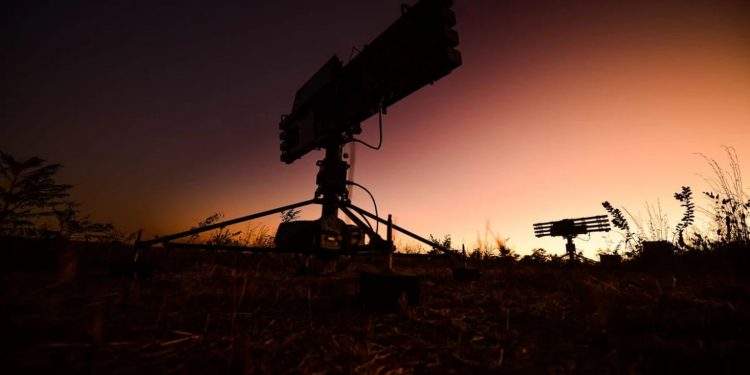Embraer and the Brazilian Army have signed a contract to extend the use of SABER M60 radars for the army’s Anti-Aircraft Artillery Units. The announcement was made at the FIDAE (Feria Internacional del Aire y del Espacio) 2022 event, which is being held at the Arturo Merino Benítez International Airport in Santiago, Chile, from April 5th to 10th.
This will include the acquisition of four additional radar units, in its 2.0 version, reinforcing the partnership established between the Brazilian Army and Embraer in the continuous development, implementation, and improvement of military equipment, which contributes to increasing these Units’ capabilities.
Acquiring the SABER M60 radars is part of the Strategic Planning of the Brazilian Army 2020-2023 and expands the Land Forces’ operational capacity. It shows the commitment to the constitutional mission of homeland defense and contributes to the expansion of partnerships between the public sector, academia and industry in order to seek mastery of critical technologies in the defense area.
As a result of the partnership between Embraer and the Brazilian Army in developing a low-altitude anti-aircraft artillery radar, the SABER M60 Radar is 100% developed in Brazil, having entered operation in 2010 when the first units were delivered to the Army. In 2019, the technological update phase was completed, resulting in version 2.0 which has already been exported.
The SABER M60 is a search radar that integrates a low-altitude anti-aircraft defense system to protect strategic points and areas, such as factories, power plants, and government facilities. With 3D technology, it has a range of 32 nautical miles and an altitude of up to 16,400 feet, with the ability to track up to 60 targets simultaneously, including automatic target detection and classification. Easy to assemble and transport, it can be assembled in 15 minutes and includes Low Probability Interception (LPI) technology, which allows it to identify targets without being easily identified.
The SABER M60 can be integrated into missile-based weapons systems or anti-aircraft cannons and can be customized to be integrated into any other air defense system, such as the Brazilian Aerospace Defense System.











